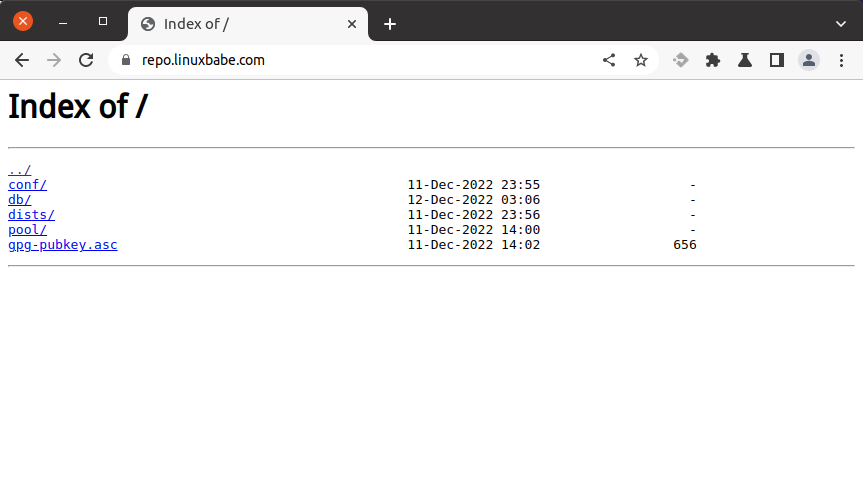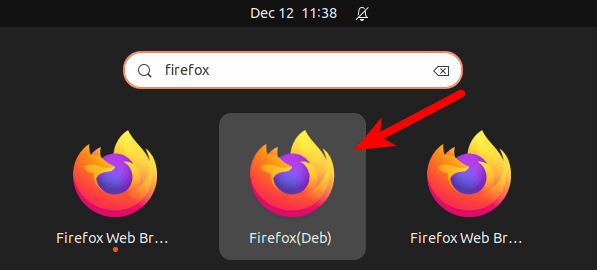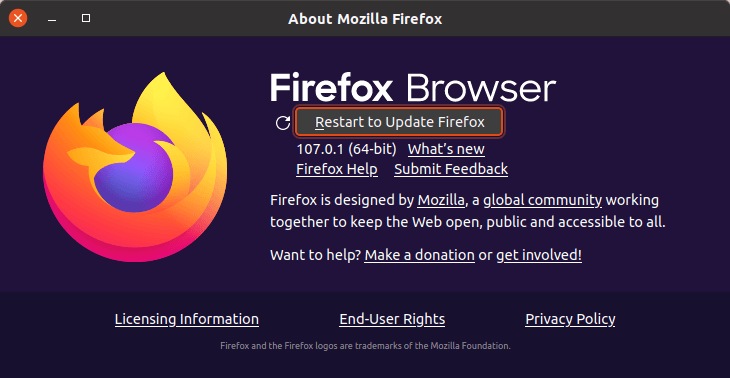How to Set Up APT Package Repository on Debian/Ubuntu Server
This tutorial is going to show you how to set up your own package repository on Debian/Ubuntu server.
If you are a long-time Linux user, I’m sure you have installed software packages by adding an upstream repository such as Spotify or Jelly media server. Most of the time you just enter sudo apt install package_name to install a software package from the default Debian/Ubuntu repository, but sometimes a package is only available in the upstream repository, or the upstream repository has the newest version of the software, so you need to use it.
If you are a developer or package maintainer, it can be very useful to run your own package repository to distribute your software packages to other Linux users, so they can install the software and get updates easily, and I will show you how in this article.

Note: This tutorial is not showing how to set up a local APT mirroring repository that replicates packages from the Debian/Ubuntu repository. The repository we are going to set up works like a Personal Package Archive (PPA).
Requirements
Step 1 ~ Step 4 should be done on a local computer, to keep your private key separate from the cloud server. The private key should not be stored on a public-facing server and never share with anyone. The local computer and the cloud server should run Debian or Ubuntu, or a derivative distro.
You should prepare a cloud Linux server and a domain name.
Step 1: Generate GPG Key Pair
You will need to sign software packages with a GPG private key and distribute the GPG public key along with the software packages, so users can verify the integrity of packages. If you don’t yet have a GPG key pair, please follow the tutorial linked below to create one.
Step 2: Create Your .Deb Package
.deb is the standard format for software packages developed for Debian/Ubuntu distros. You can grab an existing .deb file for the purpose of this tutorial, if the package is distributed under an open-source license. I will show you the basic steps to create a .deb file in case you need to develop your own software.
I use Firefox as an example. Ubuntu doesn’t ship Firefox in .deb format anymore. It only provides the Snap package for Firefox. I use Snap package sometimes, like the Let’s Encypt client certbot, because it’s a simple program. I invoke it to obtain a TLS certificate, then don’t have to worry about it anymore. The web browser is a piece of software that I need to use all the time, but the Snap version of Firefox doesn’t integrate well with the file system, so I prefer to use the tranditional Debian package format.
Under the hood, a .deb file is just an ar achive, similar to a .tar achive. The following instructions are used to package a Firefox binary tarball into a .deb file. If you want to do packaging using a source code tarball, the steps are a little different.
CD to your home directory.
cd ~
Download Firefox tarball from Mozilla’s web server.
wget https://download-installer.cdn.mozilla.net/pub/firefox/releases/107.0.1/linux-x86_64/en-US/firefox-107.0.1.tar.bz2
Extract the archive.
tar xvf firefox-107.0.1.tar.bz2
Now there’s a firefox directory. Under this directory we need to create the opt/firefox-deb/ sub-directory, because we want users to install the package to the /opt/firefox-deb/ directory on their computer.
mkdir -p ~/firefox/opt/firefox-deb
Then open your file manager and move all other files and sub-directoris to the ~/firefox/opt/firefox-deb/ directory.
Next, Make a DEBIAN directory.
mkdir ~/firefox/DEBIAN
Create a control file under the DEBIAN directory.
nano ~/firefox/DEBIAN/control
Add the following lines to this file. The Package parameter will determine the package name.
Source: firefox Maintainer: Xiao Guoan <xiao@linuxbabe.com> Section: misc Priority: optional Standards-Version: 3.9.2 Build-Depends: debhelper (>= 9) Package: firefox-deb Architecture: amd64 Description: Firefox web browser without the Snaps Version: 107
Save and close the file. After that, we need to create a .desktop file, so user can easily start Firefox. Run the following command to create the usr/share/applications/ sub-directory.
mkdir -p ~/firefox/usr/share/applications/
Create the .desktop file.
nano ~/firefox/usr/share/applications/firefox-deb.desktop
For your convenience, I upload my firefox-deb.desktop file to my web server. You can download and use it.
Then run the following command to build the .deb package.
dpkg-deb --build ~/firefox
Ubuntu uses zstd compression for .deb packages. If you build .deb package for Debian on an Ubuntu computer, then you should use other compression methods like gzip, which will work on both Debian and Ubuntu.
dpkg-deb -Zgzip --build ~/firefox
Step 3: Sign the Package with Your GPG Private Key
Install the dpkg-sig tool.
sudo apt install dpkg-sig
Then run the following command to sign the .deb package. It will use your default GPG private key, and you will need to enter your key passphrase to unlock it.
dpkg-sig --sign builder firefox.deb
Step 4: Create the APT Repository
Install the Debian package repository producer.
sudo apt install reprepro
Then create a base directory for the repository.
sudo mkdir -p /var/www/repository/
Change the owner to your username.
sudo chown username:username /var/www/repository/
Create a conf sub-directory.
mkdir -p /var/www/repository/conf/
Create a text file named distributions.
nano /var/www/repository/conf/distributions
Add the following lines in this file.
Origin: repo.linuxbabe.com Label: apt repository Codename: jammy Architectures: amd64 Components: main Description: LinuxBabe package repository for Debian/Ubuntu SignWith: 752E173A3F8B04F5 Pull: jammy
Where
Origin: the hostname of your repository.Label: Give it a nameCodename: What distro your repository supports.jammyis for Ubuntu 22.04. If you want to support multiple distros, simple copy the above snippet, paste it in the same file and change the codename.Architectures: could beamd64,i386, orsource.Components: If you don’t have lots of packages in your repository, usemainas the single Component.Description: Describe what this repository is for.SignWith: The repository should be signed with a GPG key. A Release.gpg file will be generated. You need to enter your GPG key ID here.
You can find your key ID with the following command. Replace user-id with your GPG email address.
gpg --list-sigs user-id
Sample output:

As you can see, my key ID is 752E173A3F8B04F5.
Save and close the file. Next, add the .deb file to the repository. You will be asked to enter your GPG key passphrase.
reprepro -V --basedir /var/www/repository/ includedeb jammy /path/to/the/.deb_file
-V: verbose mode.--basedir: specify the base directory.includedeb: add deb package to the repository.jammy: the distro codename. In this case, the deb package will be added for Ubuntu 22.04 users.

Note that you should not run reprepro as root or with sudo, or it can’t find your GPG key.
Now we should also add the GPG public key to the repository. Use the following command to export your public key and save it under the repository base directory. user-id is your email address of your GPG key.
gpg --armor --export user-id | sudo tee /var/www/repository/gpg-pubkey.asc

Step 5: Upload the Repository to a Cloud Server
If you want others to use your repository, then you should create the repository on a cloud Linux server. Once you got one, SSH into the server and create the same base directory.
sudo mkdir -p /var/www/repository/
Then use rsync to sync the two base directories. Replace 12.34.56.78 with the IP address of your cloud Linux server.
rsync -azP --delete /var/www/repository/ root@12.34.67.78:/var/www/repository/
-a: archive mode-z: compress file data during the transfer-P: keep partially transferred files and show progress during transfer--delete: delete extraneous files from the destination directory.
Step 6: Set Up HTTP Server
Now we need to set up an HTTP server to expose the repository to the public Internet. We can use Nginx or Apache.
Nginx
Install Nginx on the cloud server.
sudo apt install nginx
Create a virtual host file for the APT repository.
sudo nano /etc/nginx/conf.d/apt-repository.conf
Add the following lines in this file.
server {
listen 80;
server_name repo.linuxbabe.com;
access_log /var/log/nginx/apt-repository.access;
error_log /var/log/nginx/apt-repository.error;
location / {
root /var/www/repository/;
autoindex on;
}
location ~ /(.*)/conf {
deny all;
}
location ~ /(.*)/db {
deny all;
}
}
Save and close the file. Then test Nginx configuration.
sudo nginx -t
If the test is successful, reload Nginx.
sudo systemctl reload nginx
Apache
If you prefer to use Apache, then install Apache on the cloud server.
sudo apt install apache2
Create a virtual host file for the APT repository.
sudo nano /etc/apache2/sites-available/apt-repository.conf
Add the following lines in this file.
<VirtualHost *:80>
ServerName repo.example.com
ErrorDocument 404 /404.html
DocumentRoot /var/www/repository
<Directory /var/www/repository/ >
# We want the user to be able to browse the directory manually
Options Indexes FollowSymLinks Multiviews
Require all granted
</Directory>
# This syntax supports several repositories, e.g. one for Debian, one for Ubuntu.
# Replace * with debian, if you intend to support one distribution only.
<Directory "/var/www/repository/apt/*/db/">
Require all denied
</Directory>
<Directory "/var/www/repository/apt/*/conf/">
Require all denied
</Directory>
<Directory "/var/www/repository/apt/*/incoming/">
Require all denied
</Directory>
</VirtualHost>
Save and close the file. Then enable this virtual host.
sudo a2ensite apt-repository.conf
Restart Apache.
sudo systemctl restart apache2
Step 7: Enable HTTPS
To encrypt the HTTP traffic, we can enable HTTPS by installing a free TLS certificate issued from Let’s Encrypt. Run the following command to install Let’s Encrypt client (certbot) on Ubuntu 22.04/20.04.
sudo apt install certbot
If you use Nginx, then you also need to install the Certbot Nginx plugin.
sudo apt install python3-certbot-nginx
Next, run the following command to obtain and install TLS certificate.
sudo certbot --webroot -w /var/www/repository -i nginx --agree-tos --redirect --hsts --staple-ocsp --email you@example.com -d repo.example.com
If you use Apache, then you need to install the Certbot Apache plugin.
sudo apt install python3-certbot-apache
Next, run the following command to obtain and install TLS certificate.
sudo certbot --webroot -w /var/www/repository -i apache --agree-tos --redirect --hsts --staple-ocsp --email you@example.com -d repo.example.com
Where:
--webroot: Use the webroot plugin to obtain TLS certificate.-w: specify the webroot directory.-i nginx: Use the nginx plugin to install the certificate.-i apache: Use the Apache plugin to install the certificate--agree-tos: Agree to terms of service.--redirect: Force HTTPS by 301 redirect.--hsts: Add the Strict-Transport-Security header to every HTTP response. Forcing browser to always use TLS for the domain. Defends against SSL/TLS Stripping.--staple-ocsp: Enables OCSP Stapling. A valid OCSP response is stapled to the certificate that the server offers during TLS.
The certificate should now be obtained and automatically installed.

And you can visit your APT repository in the web browser.

Step 8: Test
Now we can add the repository on another computer to test if it will work.
Run the following command to import the GPG public key so that APT can verify package integrity during installation.
wget --quiet -O - https://repo.linuxbabe.com/linuxbabe-pubkey.asc | sudo tee /etc/apt/keyrings/linuxbabe-pubkey.asc
Add the repository.
echo "deb [signed-by=/etc/apt/keyrings/linuxbabe-pubkey.asc arch=$( dpkg --print-architecture )] https://repo.linuxbabe.com $(lsb_release -cs) main" | sudo tee /etc/apt/sources.list.d/firefox-linuxbabe.list
Update repository index.
sudo apt update
Install Firefox. Don’t worry. It won’t overwrite your existing Firefox installation.
sudo apt install firefox-deb
Check where it’s installed.
dpkg -L firefox-deb
You will see that Firefox Deb is installed under the /opt/firefox-deb/ directory.

And you can start it from your application menu, or run the following command.
/opt/firefox-deb/firefox

You might be wondering why I have 3 Firefox icons 🙂 Because I installed the Snap version of Firefox, Firefox ESR (Extended Security Release), and my own Firefox deb package.
If you want to remove the Snap Firefox, run
sudo systemctl disable --now var-snap-firefox-common-host\\x2dhunspell.mount sudo snap remove firefox
The good thing about using my Firefox deb package is that you can update the browser as soon as Firefox releases a new version. You don’t have to wait for me to push the update via sudo apt update.

How to Remove a Package From Repository
reprepro -V --basedir /var/www/repository/ remove jammy firefox
Then sync the repository.
rsync -azP /var/www/repository/ root@12.34.67.78:/var/www/repository/
Wrapping Up
I hope this article helped you set up an APT repository. As always, if you found this post useful, subscribe to our free newsletter to get more tips and tricks. Take care 🙂



man, simply amazing.
have you considered having these on a git repo?
Hello, how can I create a package mirror for my servers?
dpkg-sig appears to be discontinued and is not in Debian 12 or Ubuntu 24.04 repositories. Is there a new way to do this signing? I’m also noticing there is no information on dealing with source code. I believe building firefox and then putting it into a repo for public consumption and not including the source would be a license violation.